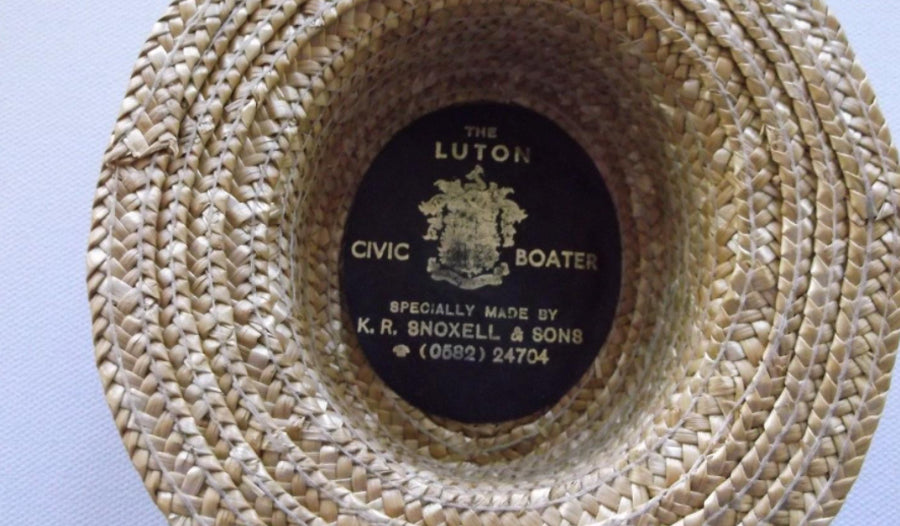
The Straw Hat Industry of Luton

Luton’s role as the global centre of hat manufacture is largely forgotten today, but its little known industrial pedigree has shaped almost every aspect of the town as we know it today. Once the beating heart of the hat making industry in England, there were over 500 hat manufacturers in Luton during the 1800s, and by 1930 the town was producing as many as 70 million hats a year, many of which were made of straw.

The success of Luton as the main centre for ladies’ hat production in the UK for over 200 years was due, in part, to the earlier regional industry of straw plaiting, an occupation that was well established by the late 17th century. This major cottage industry, especially in the counties surrounding Luton (Buckinghamshire, Bedfordshire, Berkshire and Hertfordshire), was the method of braiding straw in textiles which could then be stitched and shaped to produce hats. It was bolstered in these areas during the Napoleonic Wars of 1803-15, when supplies of ‘Leghorn’ straw plait from Italy were cut off and hefty import duties were imposed, but also because it was practiced by both sexes, all ages, and had the advantage of being infinitely more portable; unlike lace braiding you could plait straw anywhere, sitting or standing.
The advent of the straw-splitter — a simple device made first from bone and subsequently metal, which was inserted into the ends of straw in order to split it into a number of equally sized splints, resulting in a finer and far superior plait — ensured that the straw-plaiting industry developed into a large scale industrial venture by the 19th century. This, the silica-rich soils, advantageous climate, and cheap land which resulted in huge quantities of wheat and good-quality, strong and flexible straw ideal for plaiting, meant that the English plaiting industry boomed in the area surrounding Luton.
 Image: Copyright Veronica Main
Image: Copyright Veronica Main
The process by which straws were turned into plaits is simultaneously straightforward and ingenious. First of all the knots and leaves of the raw straw were removed before being trimmed to around 25cm in length; the straws would then be bleached, before being graded roughly according to size and being tied into bundles ready for sale. Straw plaiters worked with a bundle of straws or splints under the left arm, each straw being moistened between the lips before being worked into the plait — this gave many plaiters a characteristic permanent scar at the corner of the mouth. Plaits could vary greatly in design, quality, width, and the number of straws of or splints used to create them. An advantage of using the straw-splitters was that the outer and inner side of the straw differ in colour and texture, allowing for a greater variety of patterns. Finally the finished plait would be passed through a plait-mill, a roller with grooves to prevent the decorative head of the plait from being crushed.

Image: Illustrated by Alice Pattullo
In order to turn straw plait into a hat, the plait must be sewn in a continuous coil, starting at the crown and ending at the brim. At first done by hand, before the invention of a concealed-stitch sewing machine by Luton-based engineer Edmund Wiseman - sewers spent several years as apprentices perfecting tiny stitches that would be almost invisible in the finished item, and learning how to make a hat of the required size and shape. Most of this hand sewing was done in the home or in small establishments before being sold onto larger firms.
In Luton today there are only around 15 companies still linked to the manufacture of hats: designers, material suppliers, bleaching & dyeing and block making. Although not nearly as prolific as in Luton’s hat-making ‘hay’ day, everything required to produce a hat can still be done in Luton.
Find out more about Luton's straw industry in our article, Textile Towns, in the latest issue of Selvedge: Issue 101 Grow
Sources:
The Culture Trust Luton
The Hat Industry of Luton and its Buildings by Katie Carmichael, David McOmish and David Grech.

3 comments
Hello Do You Have This Hat. Wheatbraid Fedora Tophat Grey M/L
Cost of ladies organisation medium size straw hats
Cost of ladies organisation medium size straw hats